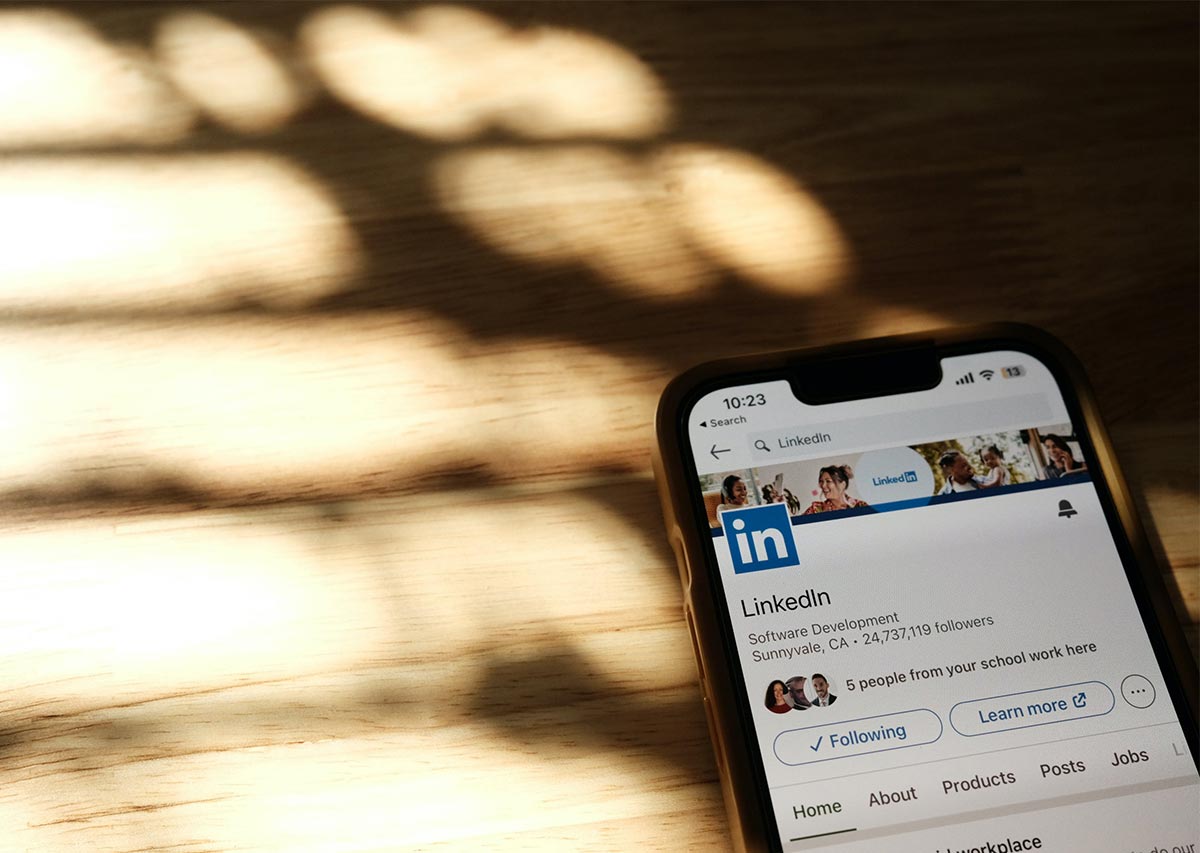LinkedIn is a powerful job search tool. A well-designed profile and strategic engagement can steer hiring managers and recruiters your way. Below are some of my favorite LinkedIn job search tips.
Profile Basics
- Use a professional-looking headshot (shoulders and above).
- Create a custom headline (first line under your name). Include keywords relevant to your desired position/ job search goals.
- Add a custom banner (image behind your profile picture). You can show some personality as long as the image is appropriate for potential employers.
- Create an “about me” section that draws INTEREST in what you do. What makes you good at your job? Why are you different? What do you offer? Communicate these things to your audience.
- Add relevant, professional media files, such as a résumé, testimonials, videos, etc.
- Go through your security and privacy settings. There are a lot of settings that can improve your visibility to prospective employers.
Experience
- Add your work experience for the past 10 years. Experience more than 10 years ago is only needed if it is the only connection you have to a certain company, skill, or industry that is relevant in your job search.
- Use prepopulated options for titles and companies when possible.
- Add job descriptions with keywords under each job. Recruiters and hiring managers can search for candidates using keywords within the job descriptions.
- Include accomplishments under each job, not just duties.
- Use short, concise sentences or bullets instead of thick paragraphs.
- Match dates, companies, and titles to your résumé.
Education
- List only relevant education and degrees. Consider leaving off the subject matter if it’s irrelevant to your career goals.
- Remove the graduation year if you earned your degree more than 5-10 years ago.
- Use the “Licenses & Certifications” section (instead of the “Education” section) to include relevant certification and licenses. Be clear on whether certifications or licenses are active or expired.
- If you have not completed a degree or certification, list it as training or courses to avoid confusion.
- Match your certifications and education to what is listed on your résumé.
Skills & Endorsements
- Enter all relevant skills, up to the max (50 at this time).
- “Pin” your top three skills to be easily viewed on your profile.
- Don’t spend a lot of time trying to get endorsements; just get the skills listed.
- Skills are searchable by recruiters and hiring managers, so include your most relevant skills first, then fill in any additional slots.
Recommendations
- Ask for recommendations from co-workers, clients, professors, and vendors.
- Giving recommendations is a great way to get them.
- Set a goal to receive at least three recommendations (you can use quotes/excerpts from these in cover letters or résumé testimonials too).
- Review and approve your recommendations to make them visible.
Accomplishments
- List awards and achievements.
- Add relevant affiliations (trade organization memberships, community involvement, etc.).
- Be conscientious about adding affiliations of a sensitive nature, i.e., politics, religion, and age.
- Add additional languages for which you are fluent or business proficient.
Interests
- If you apply with a company, follow it on LinkedIn. Also follow leading companies in your industry and local market.
- Educational institutions and trade organizations related to your background and profession are great to follow.
- Join relevant groups. It is not necessary to spend a lot of time in the groups. Most job seekers find groups more beneficial for exposure and research than networking.
Connections
- Send connection requests to co-workers, managers, vendors, clients, and fellow alumni.
- Connect with recruiters in your local market and/or niche industry.
- Follow or connect with influencers relevant to your industry. Caution; only connect or follow those with whom you share the same values.
- After an interview, send a connection request to the manager and/or HR.
- Use LinkedIn for research before an interview and to help build relationships within an organization. However, use it for research and networking, not stalking!
Messaging
- Respond to messages from recruiters and potential employers promptly. Even if you are not interested in the position they present, send an acknowledgment.
- Check your settings to make sure messages are pushed to your email if you don’t log in daily.
- Turn on the notification to let recruiters know you are open to job opportunities. This is one of the many options in your account settings.
Engagement
- Set up job alerts.
- Set a goal to post something relevant to your industry or companies of interest (original content or sharing/liking) at least three times per week.
- Avoid controversial content.
- Comment on relevant articles and posts. Add your expertise, such as tips, support, recommendations, etc.
- Stay positive!! Don’t get sucked into polarized content. Negativity on LinkedIn WILL HURT your job search, so don’t do it!
More than 87% of recruiters use LinkedIn in the hiring process, so use it often and use it right! While that percentage varies from year-to-year, it remains a primary tool used by employers! Take advantage of the platform!
For more job search tips, follow us on social media! Need help in creating a great résumé or LinkedIn presence? If so, shoot us a message.
Subscribe to our newsletter for the latest trends, tips, market data, and service offerings.


